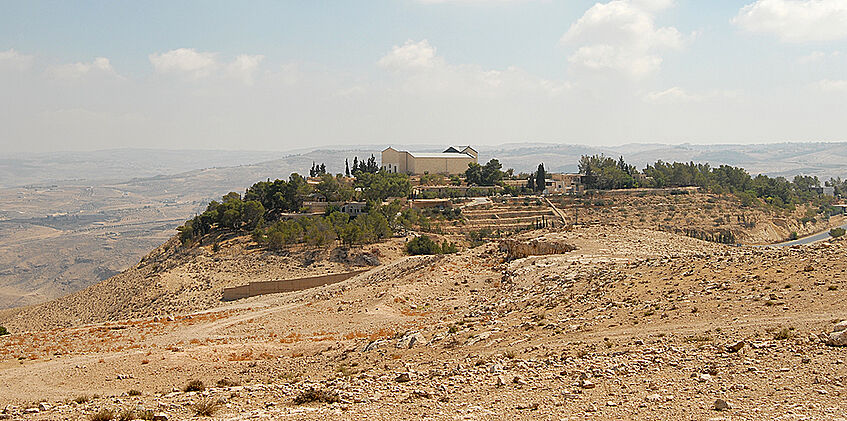A devotional Paradigm in the Byzantine and early Islamic Period: Reassessing the Monastic Complex of the Memorial of Moses on Mount Nebo, Jordan

The aim of my PhD dissertation (in preparation for the publication) is to reassess the previous interpretations related to the monastic complex of the Memorial of Moses on Mount Nebo, Jordan. This analysis was possible due to new archaeological surveys promoted by the Studium Biblicum Franciscanum, on which I cooperated as archaeological field assistant. My research was conducted into those parts of the basilica that had never been investigated archaeologically. Excavations in the central nave of the church have unearthed a burial tomb, completely intact. It was found to be empty, adorned with alabaster marble and placed on the highest point of the mountain. The tomb structure was built in the oldest sacred building erected on Mount Nebo, in the place where, according to biblical tradition, the memory of the death of the Prophet Moses was worshipped.
The thesis is divided into two different parts. The first two chapters are devoted to the last discoveries and to the reassessment of previously published data, in order to suggest a new approach to the first building constructed on Mount Nebo and a revised interpretation of the several layers of construction carried out on the monument over the centuries. The historical and topographic context of the coenobium is discussed in the second part. The monastery of Mount Nebo was indeed part of the variegated framework of monastic complexes linked to the worship of the biblical figures widespread in Transjordan. After discussing this important correlation, I examined the different economic aspects that have contributed to the evolution of the monastery in its joint production and livelihood. The fine mosaic floors demonstrate the evergetism of the abbots, lay donors and local bishops, while the agricultural facilities show the hegemonic role of the monastery over the colony of monks who dwelled in the surrounding valleys. Finally, I analyzed the various factors that led to the monastic decline. Particular attention was paid to the excavations under the synthronon and in one room of the monastery, which have provided additional data on the last renovation of the building, occurred during the transition between the Umayyad period and the early ‘Abbāsid era.
- Bianchi D., A Shrine to Moses. A reappraisal of the Mount Nebo Monastic Complex between Byzantium and Islam, AForsch 31 (Wien: Verlag der ÖAW 2021).
Univ.-Ass. Dott. mag. Dott. Davide Bianchi, PhD
e-mail: davide.bianchi@univie.ac.at
